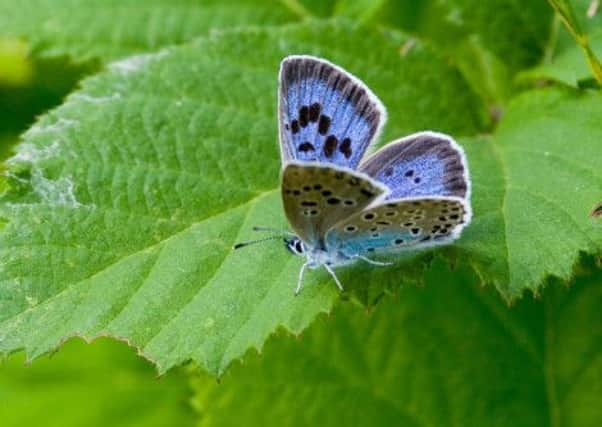Green and pleasant land becomes a hostile environment


Imagine a land where more than 60 per cent of wildlife has declined in just 50 years. Imagine a land where one in 10 of these species is threatened with extinction. Imagine a land that has seen some of its most precious natural habitats almost totally disappear.
Now stop imagining. This nightmarish vision is not some over-exploited Indonesian rainforest or some wild expanse of African savannah. This is the UK – supposedly one of the richest and most sophisticated places in the world.
Advertisement
Hide AdAdvertisement
Hide AdThe UK’s wildlife conservation groups have come together for the first time to emphatically tell the British public and its decision-makers that our once green and pleasant land is rapidly becoming a wildlife wasteland.
The State of Nature report pools together the expertise of 25 wildlife groups, specialising in everything from frogs to fungi and butterflies to bees, to show how our wildlife has fared over the last 50 years.
This stocktaking is a Doomsday Book for British wildlife. In the blink of an eye, great swathes of our natural heritage have been lost. Key habitats have been torn up; plants, flowers, birds, bats, snakes and slow worms have all disappeared in their millions.
To reach this frightening conclusion, the population and distribution of more than 3,000 species, found in major habitat types and representative of the wider British flora and fauna, were assessed from 1962 onwards.
Advertisement
Hide AdAdvertisement
Hide AdCatastrophic declines were recorded everywhere. Some 60 per cent of species plummeted in number, 30 per cent of these suffered significant declines of more than half and 13 per cent of these now face extinction.
The shameful statistics keep coming thick and fast. More than 40m pairs of breeding birds have been lost, almost three-quarters of butterflies have declined in the last decade, some 97 per cent of our flower-rich meadows have disappeared, 90 per cent of coppiced woodland has gone, and our heathland, our most bio diverse habitat, has shrunk by 80 per cent.
Once common everyday species such as the house sparrow and the hedgehog are under threat; the turtle dove and the cuckoo – key emblems of the British countryside – could be lost within a generation; the high-brown fritillary is poised to become the sixth butterfly to suffer extinction in the UK in the last 100 years. Quite simply, we are losing more nature than we are gaining.
Why? Population growth, climate change, the uncontrolled release of invasive species, the destruction of key habitats, the ruthless efficiency of modern agriculture have all combined to turn the UK into a truly hostile environment for nature.
Advertisement
Hide AdAdvertisement
Hide AdBut, as sad as all this may sound, does the demise of our natural heritage really matter at a time when millions of people are unemployed and struggling to get by?
Sir David Attenborough certainly thinks so.
Launching the State of Nature report, which he labelled a “call to arms”, he said: “We recognise that the natural world is valuable to us in all kinds of practical ways, but it is also invaluable to us in other ways – for our health, not only our physical health but also our mental health.
“We now know what the situation is. We now know the damage that faces us. We now know what species and what proportion of species are in real danger. We can now set our targets.”
In the face of such startling loss it is impossible for the natural world to fight back of its own accord. But all is not lost.
Advertisement
Hide AdAdvertisement
Hide AdDeep-rooted public interest in nature, coupled with targeted conservation, can help wildlife bounce back and reverse these declines.
The evidence of this is all around us. The Thames, once declared biologically dead, is now cleaner than it has been for 200 years.
Peregrines, once driven to the brink of extinction by the pesticide DDT, now swoop on unsuspecting pigeons in many of our towns and cities.
The large blue butterfly, which became extinct in the 1970s, is now thriving.
Advertisement
Hide AdAdvertisement
Hide AdOtters are once again found in most counties across the UK, and the rare and elusive bittern is booming from many a reedbed.
But these successes represent small victories; the UK’s wildlife faces a titanic challenge just to stay at its present level.
But by mobilising our innate and very British love of nature, we might yet prevent the cuckoo and others from being discarded upon the scrapheap of collective folk memory.
To read the State of Nature report, visit www.rspb.org.uk/ourwork/science/stateofnature/